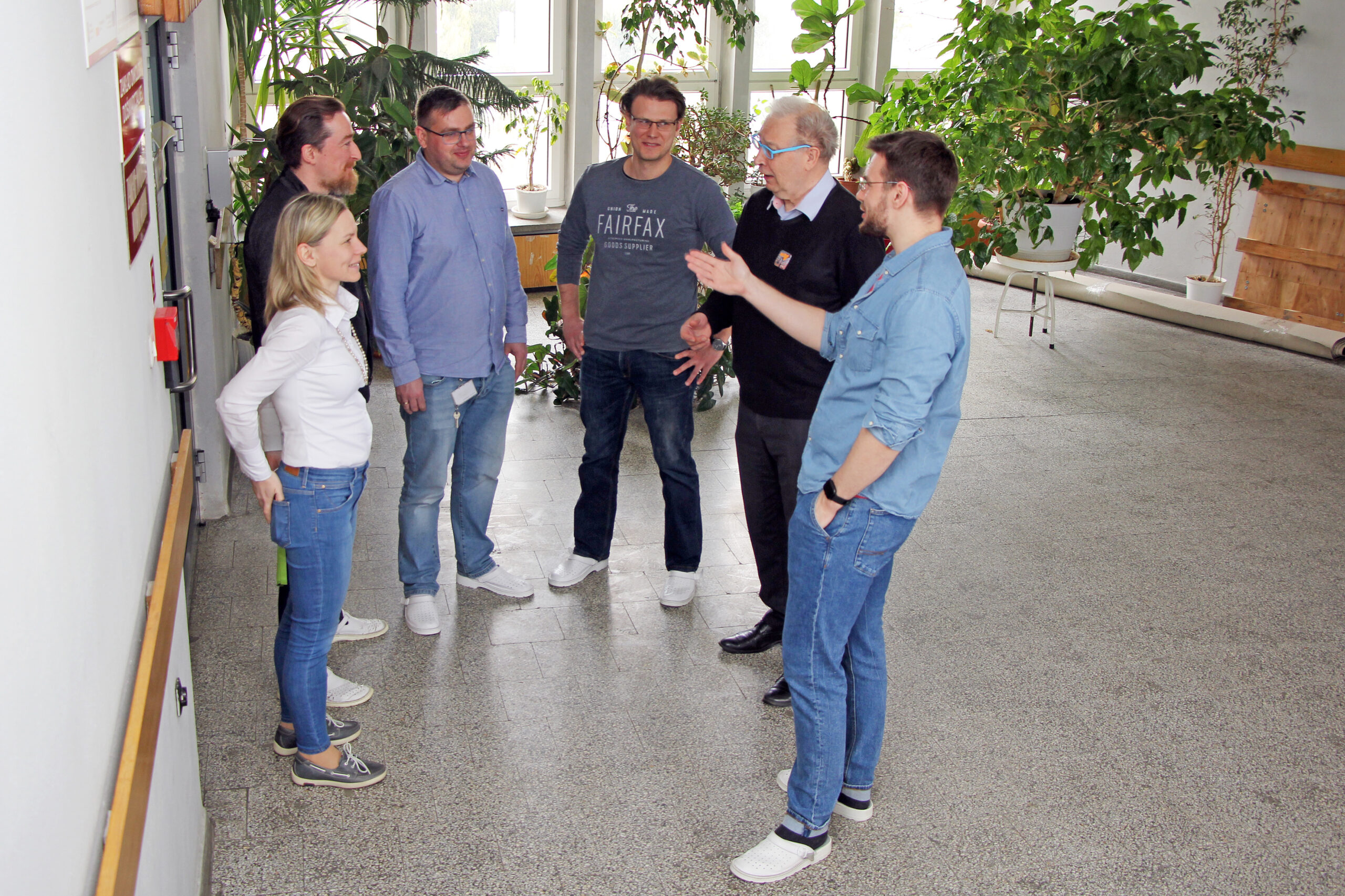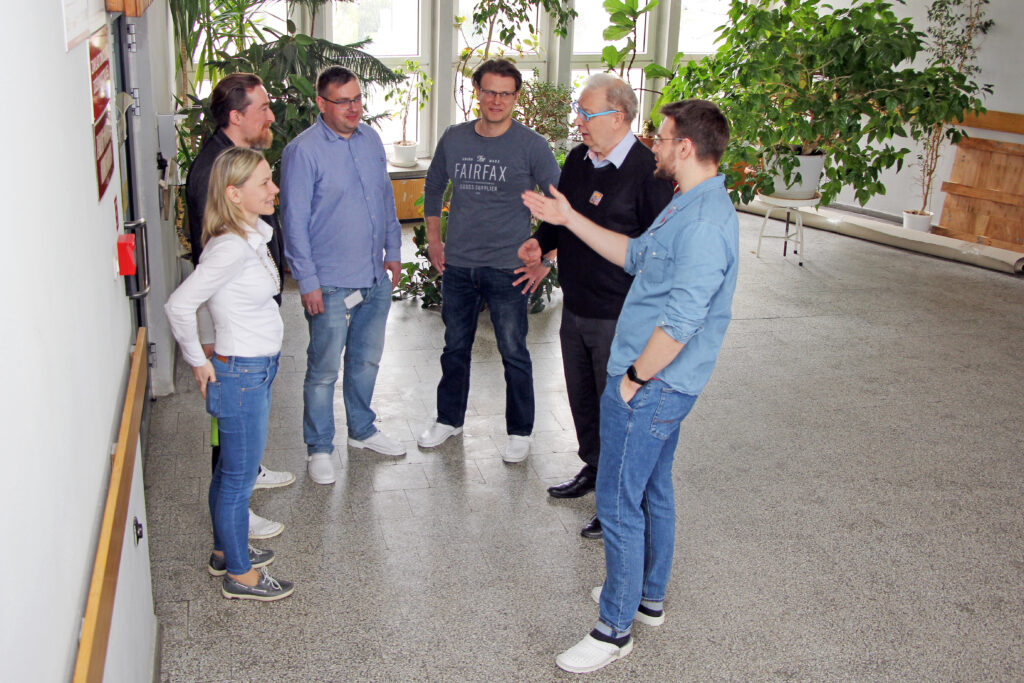Laboratory of Biomedical Chemistry is a place where chemistry meets biology. We conduct interdisciplinary research that allows us to synthesize and characterize new molecules in a way typical to chemist but we put emphasis on possible therapeutic use of molecules designed here. Many of our projects contribute to basic research but we endeavor to create molecules which have various biological activities or have high value as a diagnostic tools, therefore our results could be translated for further use. Our team currently is focused on:
- using icosahedral boron clusters as new, inorganic entities that could be used for modification of various biological molecules (eg. drugs, proteins). We synthesize small boron cluster derivatives and macromolecular bioconjugates to study influence of new boron component on their original activity. We also investigate possible use of boron-derived molecules in biological applications.
- developing potent boron carriers for boron neutron capture therapy (BNCT). Boron neutron capture therapy is a type of targeted radiotherapy of tumors where 10B isotope is selectively delivered to malignant cells. Those cells are later exposed to neutron beam. In this process, alpha particles are generated that destroy cancer cells. This kind of radiation is space limited, and affects only malignancy and cells in very close vicinity. Our focus is to design boron rich molecules that target cancer cells selectively.
- Synthesizing of macromolecular drug – carrier conjugates for anticancer therapy with particular emphasis on polysaccharide carriers.
- Searching for new alternatives in combating bacterial infections. The experiments on the physicochemistry of bacteriophages continued in our laboratory may contribute to the development of effective methods of stabilizing viruses in preparations dedicated to biotechnology. The physicochemical characteristics of bacterial viruses enable a broader look at their biology and analysis of behavior in various environments.
Team
Scientific Staff:
- Prof. Janusz Boratyński, PhD, DSc, Eng, Professor (0000-0001-5072-1162)
- Bożena Szermer-Olearnik, PhD, Eng, Assistant Professor (0000-0002-1451-4227)
- Jarosław Ciekot, PhD, Assistant Professor (0000-0001-6883-2338)
- Krzysztof Fink, PhD, Eng, Assistant Professor (0000-0002-1238-9653)
Specialists:
PhD Students:
Research methods
Synthetic methods:
- Synthesis of hybrid molecules containing icosahedral boron clusters,
- Chemical modifications of biologically active molecules,
- Synthesis of macromolecular drug-carrier conjugates,
- Synthesis of macromolecular boron (10B) carriers for BNCT.
Analytical and physicochemical methods:
- Chromatographic methods,
- Mass spectrometry,
- Spectrophotometry,
- Circular dichroism,
- Dynamic light scattering,
- Isothermal titration calorimetry.
Key equipment
- High and Ultra high performance liquid chromatography systems: Dionex UltiMate 3000 RS with DAD, fluorescence, CAD – Charged Aerosol Detector,
- Mass spectrometer ESI-TOF micrOTOF-Q II, Bruker,
- Spectrophotometer Specord 250, Analytik Jena AG,
- Circular Dichroism spectrophotometer J-1500, Jasco,
- Viscometer M-VROC ,RhenoSense,
- Nano ITC Low Volume isothermal titration calorimeter,TA Instruments
- Molecular size analyzer (DLS) Zetasizer Nano, Mavern
- Climate Chamber ICH series Memmert,
- Freeze Dryer Alpha 2-4 LSC, Christ
- Analytical balance Mettler Toledo XS105
Most important projects (during the last 10 years)
- Insulin – metallacarborane conjugates: A new strategy to enhance the biological efficacy of peptide drugs NCN, 2019/35/O/NZ7/03764, implementation period: 2020 – 2024,
- Conjugates of metallacarboranes and short cationic peptides with antibacterial and anticancer activity. NCN, 2019/32/C/NZ7/00510; implementation period: 2019 – 2022,
- Optymalizacja warunków oczyszczania i stabilizacji preparatu bakteriofaga litycznego wobec Pseudomonas aeruginosa NCN, 2019/03/X/NZ6/01710, implementation period: 2019 – 2020
- New strategies in cancer therapy – bioinorganic conjugates of cytostatics and boron clusters, NCN, 2016/23/D/NZ1/02611, implementation period: 2017 – 2021,
- Synthesis, physicochemical and biological properties of conjugates of cellulose derivatives with methotrexate, NCN, 2015/17/N/NZ7/04107, implementation period: 2016 – 2020,
- Synthesis, physicochemical and biological properties of thymosin beta4 – boron cluster conjugates. New strategy of improvement of pharmacokinetic parameters of therapeutic peptides, NCN, 2015/19/N/NZ7/02726, implementation period: 2016 – 2017,
- Products of the Gram-negative bacteria lysis as potentially antitumor agents. Chemical and biochemical characterization, and determination of biological activities. Development of active substance production, NCBiR Grant No. 13-0089-06, implementation period: 2010-2014.
Selected publications
- Ciekot, J.; Psurski, M.; Jurec, K.; Boratynski, J., Hydroxyethylcellulose as a methotrexate carrier in anticancer therapy. Investigational New Drugs 2020.
- Filik, K.; Szermer-Olearnik, B.; Wernecki, M.; Happonen, L. J.; Pajunen, M. I.; Nawaz, A.; Qasim, M. S.; Jun, J. W.; Mattinen, L.; Skurnik, M.; Brzozowska, E., The Podovirus phi 80-18 Targets the Pathogenic American Biotype 1B Strains ofYersinia enterocolitica. Frontiers in Microbiology 2020,
- Fink, K.; Boratynski, J.; Paprocka, M.; Goszczynski, T. M., Metallacarboranes as a tool for enhancing the activity of therapeutic peptides. Ann N Y Acad Sci 2019, 1457 (1), 128-141.
- Lisowska, M.; Milczarek, M.; Ciekot, J.; Kutkowska, J.; Hildebrand, W.; Rapak, A.; Miazek, A., An Antibody Specific for the Dog Leukocyte Antigen DR (DLA-DR) and Its Novel Methotrexate Conjugate Inhibit the Growth of Canine B Cell Lymphoma. Cancers 2019, 11 (10).
- Rossowska, J.; Anger, N.; Wegierek, K.; Szczygiel, A.; Mierzejewska, J.; Milczarek, M.; Szermer-Olearnik, B.; Pajtasz-Piasecka, E., Antitumor Potential of Extracellular Vesicles Released by Genetically Modified Murine Colon Carcinoma Cells With Overexpression of Interleukin-12 and shRNA for TGF-beta 1. Frontiers in Immunology 2019, 10.
- Waraksa, E.; Kowalski, K.; Klodzinska, E.; Rola, R.; Ciekot, J.; Filipiak, W.; Bienkowski, T.; Namiesnik, J., A rapid and eco-friendly method for determination of the main components of gamma-oryzanol in equestrian dietary and nutritional supplements by liquid chromatography-Tandem mass spectrometry. J. Pharm. Biomed. Anal. 2019, 172, 339-348.
- Fink, K.; Kobak, K.; Kasztura, M.; Boratynski, J.; Goszczynski, T. M., Synthesis and Biological Activity of Thymosin beta4-Anionic Boron Cluster Conjugates. Bioconjug Chem 2018, 29 (11), 3509-3515.
- Goszczynski, T. M.; Fink, K.; Boratynski, J., Icosahedral boron clusters as modifying entities for biomolecules. Expert Opin Biol Ther 2018, 18 (sup1), 205-213.
- Szermer-Olearnik, B.; Drab, M.; Makosa, M.; Zembala, M.; Barbasz, J.; Dabrowska, K.; Boratynski, J., 2 Aggregation/dispersion transitions of T4 phage triggered by environmental ion availability. Journal of Nanobiotechnology 2017, 15.
- Goszczynski, T. M.; Fink, K.; Kowalski, K.; Lesnikowski, Z. J.; Boratynski, J., Interactions of Boron Clusters and their Derivatives with Serum Albumin. Sci Rep 2017, 7 (1), 9800.
- Goszczynski, T. M.; Kowalski, K.; Lesnikowski, Z. J.; Boratynski, J., Solid state, thermal synthesis of site-specific protein-boron cluster conjugates and their physicochemical and biochemical properties. Biophys. Acta 2015, 1850 (2), 411-8.











